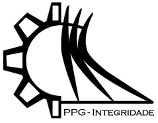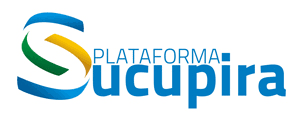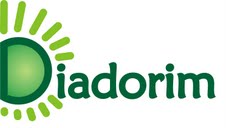COMPARISON OF VOID FRACTION CORRELATIONS FOR DRIFT-FLUX MODEL IN VERTICAL UPWARD FLOW
DOI:
https://doi.org/10.26512/ripe.v2i12.21344Palavras-chave:
Drift-flux model. Flow pattern dependence. Isothermal flow.Resumo
Multiphase flow is a common phenomenon that occurs in a variety of industries, such as petrochemical, refrigeration and chemical. The gas-liquid flows have a spatial and temporal phase distributions in a pipe section, which are related to the phases velocities, thermophysical properties and pipe geometry. Bhagwat and Ghajar (2014) developed a flow pattern independent void fraction correlation using a wide range of literature database in order to estimate the parameters of the drift-flux model, i.e., distribution parameter and local drift velocity. The main objective of this study is to compare the results of total pressure drop applying their set equation with the results using the classical parameters of drift-flux model dependent flow pattern simulated by Lima (2011) and experimental data collected by this author, Bueno (2010), Rosa and Mastelari (2008) and Owen (1986). A steady, onedimensional and isothermal air-water flow through pipes with 0.026m and 0.032m internal diameters were assumed. The frictional pressure drop was estimated using the homogenous approach. The expected result with this analysis is to verify the possibility of despising the use of flow pattern maps in the description of the air-water hydrodynamic behavior.
Downloads
Referências
Bai, Y., Bai, Q., 2005. Subsea Pipelines and Risers. Elsevier.
Beggs, H. D., Brill, J. P., 1973. A study of two-phase flow in inclined pipes. J. of Petroleum Technology, vol. 25, n. 5, pp. 607-617.
Bhagwat, S. M., Ghajar, A. J., 2014. A flow pattern independent drift flux model based void fraction correlation for a wide range of gas-liquid two phase flow. Int. J. of Multiphase Flow, vol. 59, pp. 186-205.
Bueno, L. G. G., 2010. Estudo Experimental de Escoamentos Líquido-Gás Intermitentes Em Tubulações Inclinadas. Master thesis, State University of Campinas.
Dukler, A. E., Wicks, M., Cleveland, R. G., 1964. Frictional pressure drop in 2-phase flow: B. an approach through similarity analysis. AIChE J., vol. 10, n. 1, pp. 44-51.
França, F., Lahey, R., 1992. The use of drift-flux techniques for the analysis of horizontal two-phase flows. Int. J. of Multiphase Flow, vol. 18, n. 6, pp. 787-801.
Friedel, L., 1979. Improved friction pressure drop correlations for horizontal and vertical two-phase pipe flow. European two-phase flow group meeting, Italy, Paper E2, pp. 485-492.
Haaland, S. E., 1983. Simple and explicit formulas for the friction fator in turbulent pipe flow. J. of Fluids Engineering, vol. 105, n. 1, pp. 89-90.
Ishii, M., Hibiki, T., 2010. Thermo-Fluid Dynamics of Two-Phase Flow. Springer.
Kataoka, I., Ishii, M., 1987. Drift flux model for large diameter pipe and new correlation for pool void fraction. Int. J. Heat Mass Transfer, vol. 30, n. 9, pp. 1927-1939.
Lima, L. E. M., 2011. Análise do Modelo de Mistura Aplicado em Escoamentos Isotérmicos Gás-Líquido. PhD thesis, State University of Campinas.
Owen, D. G., 1986. An experimental and theoretical analysis of equilibrium annular flows. PhD thesis. University of Birmingham.
Rosa, E. S.; Mastelari, N., 2008. Desenvolvimento de Técnicas de Medidas, Instrumentação e Medidas em Escoamentos de Golfadas de Líquido e Gás em Linhas Vertical e Inclinada. Campinas, 248 p. III Relatório.
Zuber, N., Findlay, J., 1965. Average volume concentration in two phase systems. J. of Heat Transfer, vol. 87, n. 4, pp. 453-468.
Downloads
Publicado
Como Citar
Edição
Seção
Licença
Autores que publicam nesta revista concordam com os seguintes termos:
Autores mantém os direitos autorais e concedem à revista o direito de primeira publicação, sendo o trabalho simultaneamente licenciado sob a Creative Commons Attribution License o que permite o compartilhamento do trabalho com reconhecimento da autoria do trabalho e publicação inicial nesta revista.
Autores têm autorização para assumir contratos adicionais separadamente, para distribuição não-exclusiva da versão do trabalho publicada nesta revista (ex: publicar em repositório institucional ou como capítulo de livro), com reconhecimento de autoria e publicação inicial nesta revista.
Autores têm permissão e são estimulados a publicar e distribuir seu trabalho online (ex: em repositórios institucionais ou na sua página pessoal) a qualquer ponto antes ou durante o processo editorial, já que isso pode gerar alterações produtivas, bem como aumentar o impacto e a citação do trabalho publicado.









